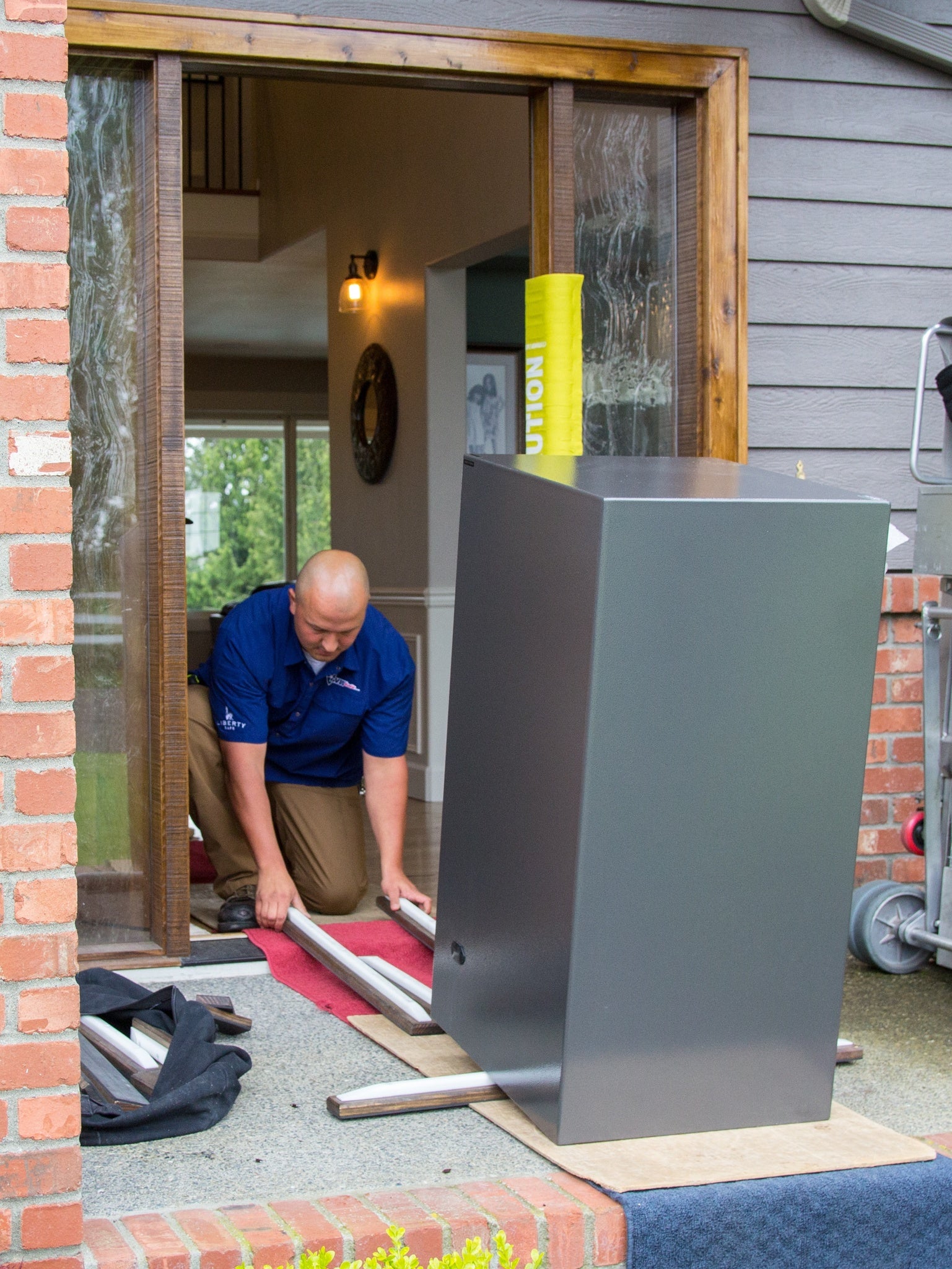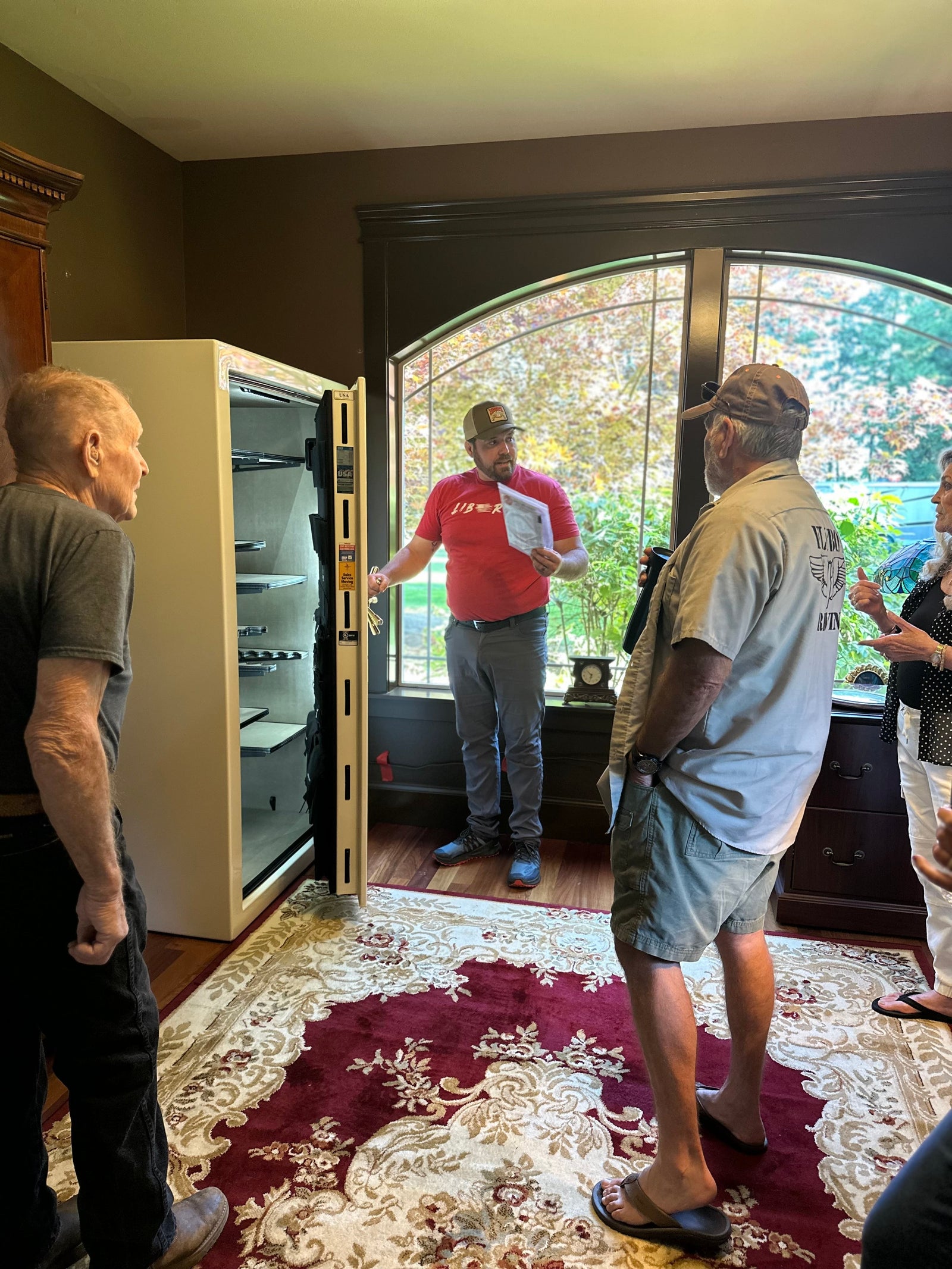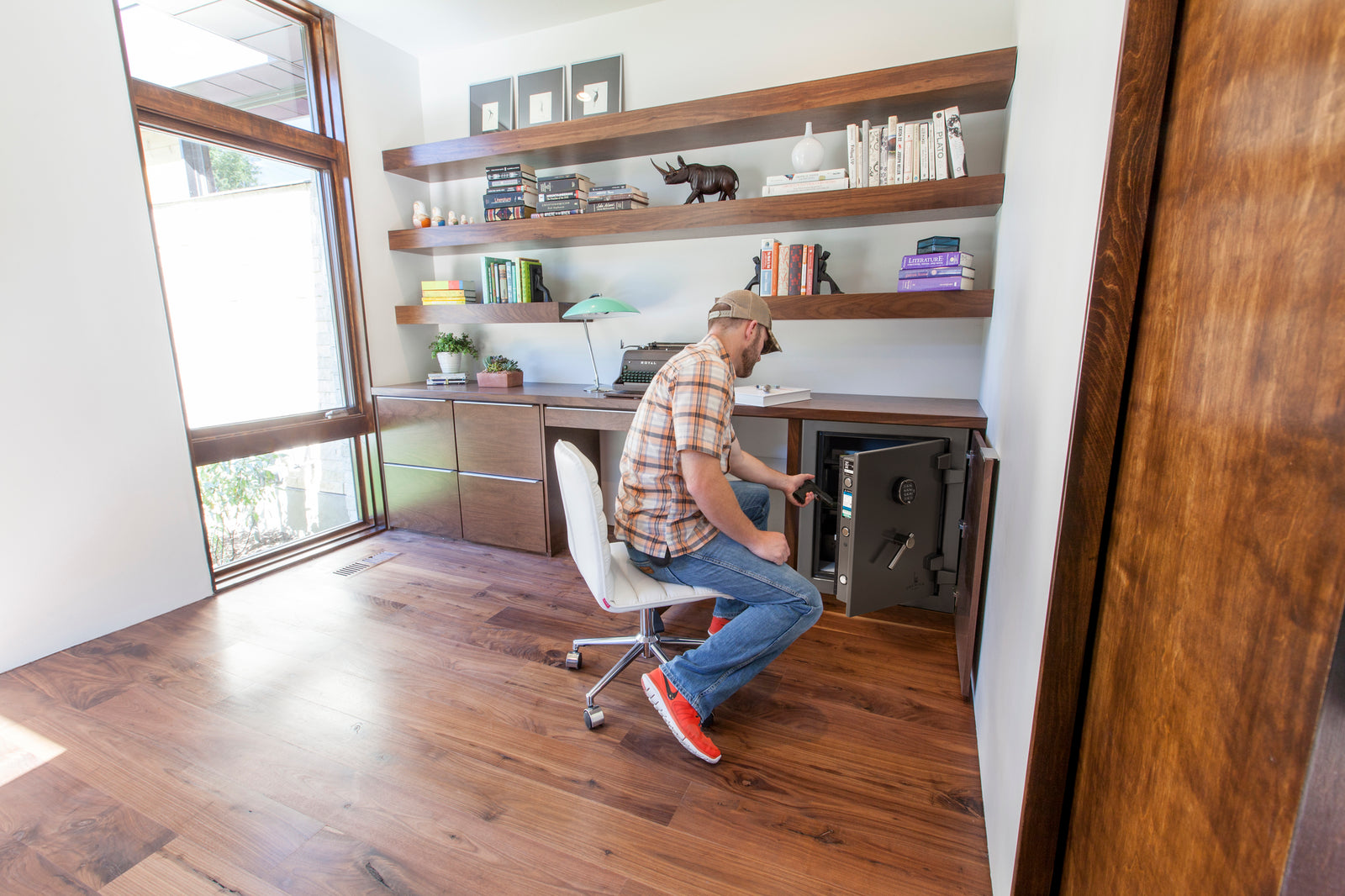.jpg) Moving a gun safe is not an easy task because of its bulky size and weight. The safest option is to use professional movers who have experience with safe moving. But if you must move yours, these tips will show you how to move a safe while reducing your risk of injury and damage to your home and your safe.
Moving a gun safe is not an easy task because of its bulky size and weight. The safest option is to use professional movers who have experience with safe moving. But if you must move yours, these tips will show you how to move a safe while reducing your risk of injury and damage to your home and your safe.
Safety in Numbers
Sometimes it's tempting to move your safe on your own, especially if you're just moving it across the same room to a new spot. The danger in this is that your safe could tip over. Whether you're moving it across the room or to a room down the hall, have others help you. It’s a good idea to have at least three strong friends available who are physically up to this heavy-duty task.
Preparation Is Key
Part of moving a safe is preparing it for the move and having the right equipment available. But most importantly, you need to have a plan in place.
- Pre-plan your route through the house and measure any doorways or tight spots so you'll know whether you can actually transport the safe through narrow spaces.
- Ensure any staircases that might be used are sturdy enough to hold the weight of the safe.
- Empty out your safe to make it lighter and protect its valuable contents from being damaged during the move.
- Borrow or rent a heavy-duty appliance dolly, supporting straps or ropes, and thick moving blankets.
- When renting equipment from a moving company, you’ll need to know the dimensions and weight of your safe.
- Wear comfortable, close-toed shoes with good soles for better traction to reduce the chance of you slipping while you move the safe, and to protect your feet.
- Protect your hands with high-quality work gloves that will give you a good grip on the safe and moving equipment.
- If you’re moving the safe to another house or business, make sure the vehicle you use is large enough and capable of carrying the weight of your safe.
Once you are ready to move your safe, make sure it’s closed and locked. Wrap it in moving blankets to help protect against damage. You’ll want to tape the blankets in place to prevent them from falling off or tripping you.
With the help of your friends, slowly and CAREFULLY tilt your safe and slip the dolly underneath its bottom. Completely secure the safe to the dolly with the straps or ropes before moving along your pre-planned path. If you’re loading the safe onto the back of a moving truck, use a loading ramp to roll the dolly up.
Once the safe is in the truck, position it against a side and securely strap it so it doesn’t move during the ride. Whether your move is within your home or another location, reverse your steps to safely unload your safe and move it into its new space.
Alternative Options
You may have read online about people using golf balls or PVC pipe to move their safes. Do those options really work? According to one of our professional safe installers, golf balls are a bad idea. While your safe will, in fact, roll pretty easily on a bed of golfballs, they're known for damaging floors. Your safe puts too much pressure on these small, focused areas, and that can push them down into your flooring, leaving dents, scratches, and even breaking tile. And this method definitely won't work if you're moving your safe across carpet (the golf balls will sink too low and stop rolling), or across floors of differing heights.
As for PVC pipe, our installer says this is a viable option, although it does present some risks. The pipe spreads the safe's weight across a larger area, making it easier to roll and protecting your floors. However, there's always a risk that you'll lose control of your safe and either damage it or your home, or even injure yourself.
Instead of PVC pipe, many professional installers use a long, rectangular bar. These bars are padded on the bottom to cushion your floors and have a smooth surface on top that allows a heavy object like a safe to glide right along. The pros will lay out a track of these bars, pushing the safe along and then pulling up the bars behind the safe and moving them back to the front of the safe's path. If you can get your hands on a set of these bars, or make your own, it can make moving your safe a little easier.
But please remember that the safest way to move your safe is to use professionals. Liberty Safe doesn’t recommend that you move a safe on your own.



